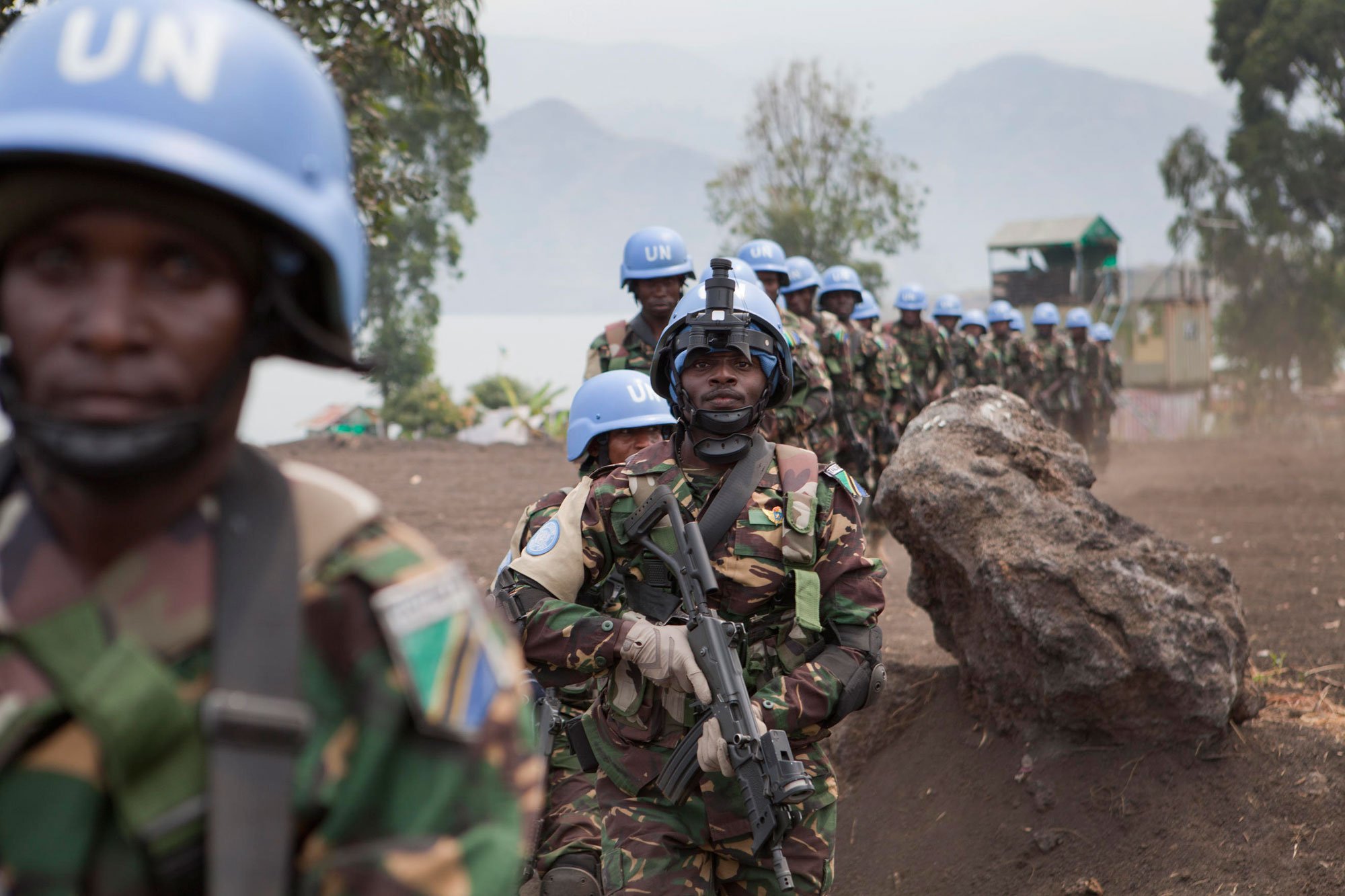An attack against UN peacekeepers in the Democratic Republic of the Congo has killed 14 blue helmets and injured scores more. This was one of the deadliest attack against UN peacekeepers ever.
The peacekeepers who were killed were from a Tanzanian contingent patrolling a long-restive area in the eastern part of the country in the North Kivu province. The perpetrators of the attack are believed to be a militant group known as the Allied Democratic Forces, ADF.
In remarks at the United Nations, Secretary General Antonio Guterres said the attack was “deliberate” and “constitutes a war crime.” He added that this was the “worst attack on UN peacekeepers in organizations recent history.”
The attack targeted Blue Helmets deployed with the peacekeeping mission in DRC, known as MONUSCO. This is the largest and one of the more complex UN Peacekeeping missions in the world. It was formed in 2010 to shore up a fragile peace agreement and protect civilians from militias roaming the eastern part of the country, including the ADF. But the mission covers the entire country — which is about the size of all of western Europe. In recent months, conflict has broke out in the south-central part of the country, known as the Kasai region, forcing a redeployment of peacekeepers to this previously conflict-free area. Meanwhile, the country is in the midst of an explosive political atmosphere. The president, Joseph Kabila, is refusing to relinquish power despite the fact that his term limit expired last year.
Despite growing instability in the country, the mission was forced to downsize this year under pressure from the Trump administration.
The United States is the largest single financial contributor to UN peacekeeping and US Ambassador Nikki Haley made it an early priority to cut the UN peacekeeping budget.
Like most UN peacekeeping missions, the mandate of MONUSCO comes up for renewal on an annual basis. The Security Council must approve the budget, troop levels and overall strategic priorities for the mission. Since MONUSCO is the largest and most expensive UN Peacekeeping mission, when the mandate came up for renewal in March, the US saw this as an opportunity to save some money. It pushed for a 25% reduction in the number of troops and steep budget cuts to the mission.
At the time though, there was ample warning that such cuts would undermine an already fragile mission. In a joint statement, the UN’s Africa Group said excessive budget cuts would “endanger the implementation of [mission] mandates.”
The UN Secretary General actually recommended an increase in the number of police by 320 officers, “in light of the increasing threat of violence related to the elections and the political situation” he said. The US blocked that request.
“Stakes are very high,” French U.N. Ambassador Francois Delattre told reporters during the height of the mandate renewal negotiations. “We can’t allow the political process to derail. MONUSCO needs the capacities to prevent and act if necessary in case of troubles.”
In the end, the US got some (but not all) of the cuts it wanted. The mission’s budget was reduced by 8%, and the troop ceiling — that is, the maximum number of peacekeepers that could be deployed — was reduced by 3,200.
This was still a significant cut for an already complex mission. And as predicted, demands on the mission actually increased after these cuts. The crisis in the Kasai region escalated, with the head of the World Food Program warning of a massive food crisis there. The political standoff in Kinshasa worsened. All the while, the mission needed to maintain a presence in the more restive eastern provinces, where this attack occurred. In an open letter to the UN over the summer, the president of the International Crisis Group and former head of UN Peacekeeping Jean-Marie Guehenno wrote that these compounding crises meant that “The Democratic Republic of Congo (DRC) is facing its deepest crisis since the end of the 1998-2003 war. ”
The attack on these peacekeepers is a calamitous event for the UN and, of course, for the loved ones of the soldiers killed. It is also a tragic reminder of the dangers faced by Blue Helmets when the Security Council deploys them to some of the world’s most dangerous places.
